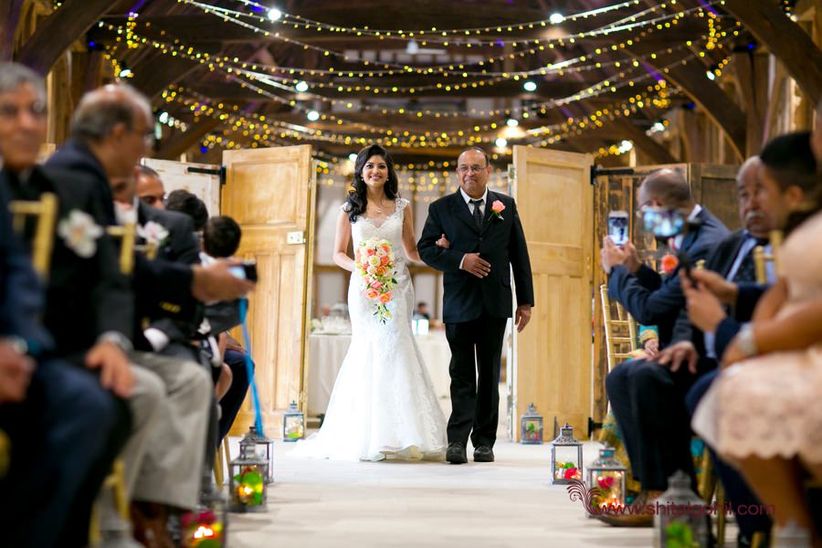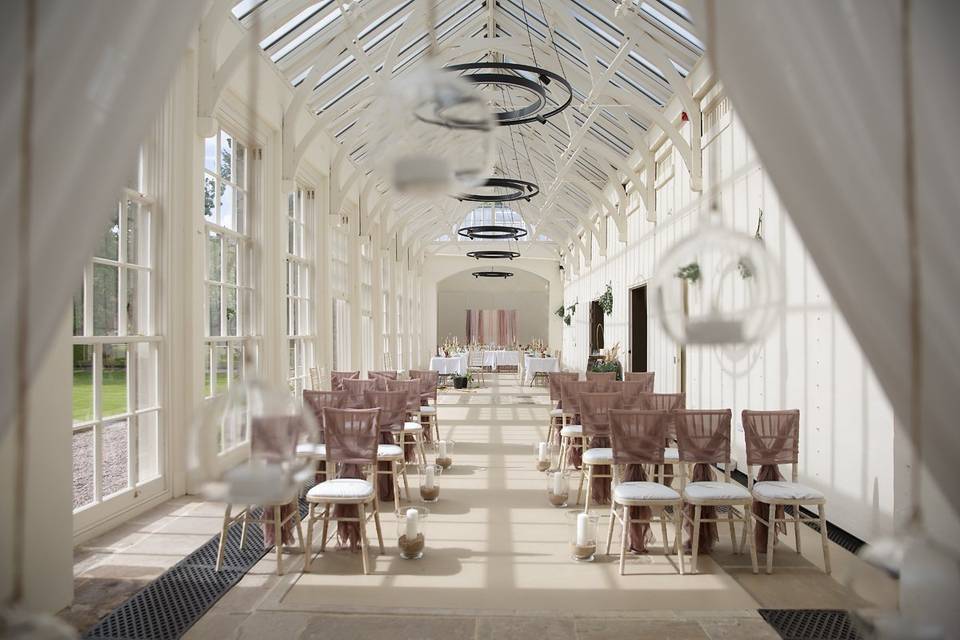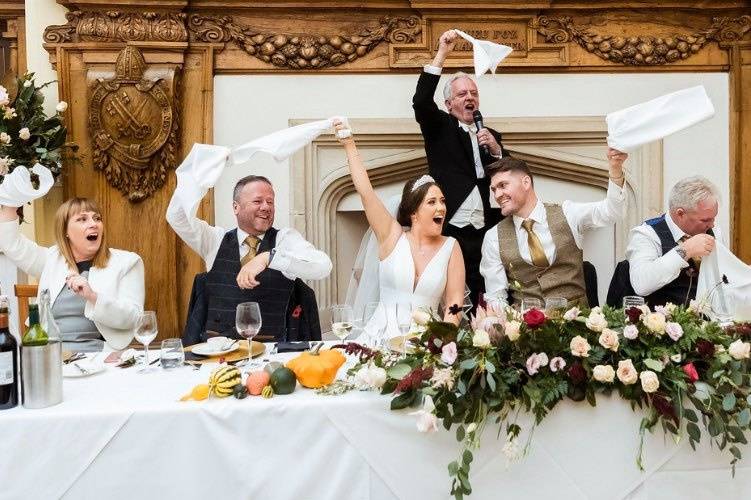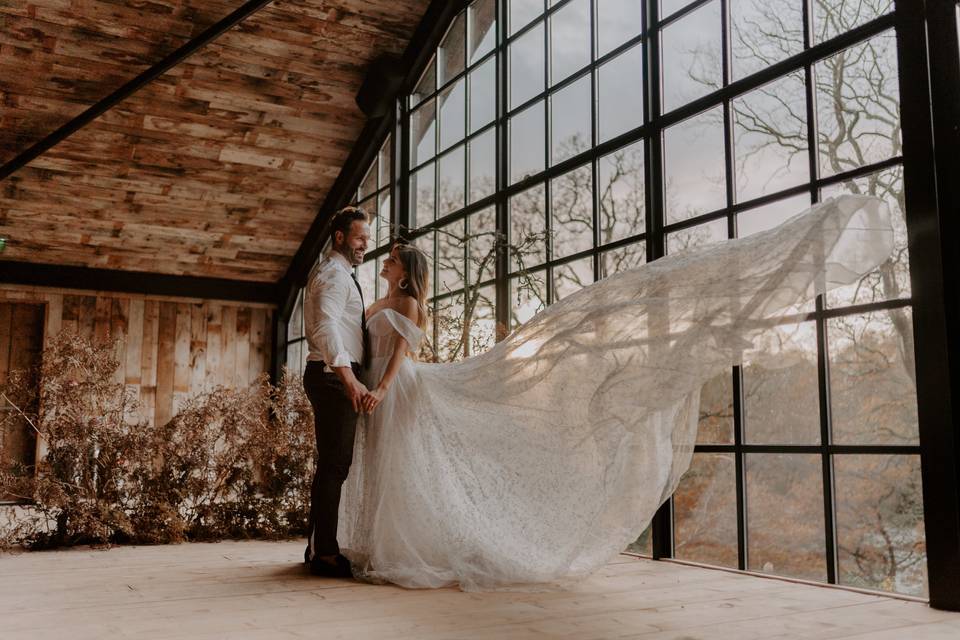What You Need to Know About the Order of a Wedding Processional
Don’t have a clue who walks when at your wedding ceremony? Here’s your essential guide to the order of a wedding processional.
We have included third party products to help you navigate and enjoy life’s biggest moments. Purchases made through links on this page may earn us a commission.


Before your big day arrives, you’ll want to get well acquainted with your wedding ceremony structure. From the order of a wedding processional to the closing remarks and recessional, you should be familiar with it all. For now, let’s focus on the first part. The wedding processional, your grand entrance, as you’ll want to start things off on the right foot.
Here’s what you need to know about the order of a wedding processional.
When does the processional happen?
Consider the wedding processional the kick-off to your entire celebration. Once your guests have been seated, your officiant will find their place at the altar, the groom (usually accompanied by his best man) will make his entrance (usually from the side), and the music will begin to play. This signifies the beginning of your processional.

Who will be in the processional?
The first thing you need to do is figure out who will be a part of the processional. This all depends on who you’ve invited into your wedding party, so it could be one person, or it could be twenty people. Typically this will include all of the bride and groom’s immediate families, bridesmaids, the maid of honour, the best man (if he’s not already at the altar), the flower girl(s), the page boys/ring bearer, and, of course, the bride and her usher (usually her father).

What is the traditional order of a wedding processional?
After the groom has made his way to the altar, the bride and groom’s immediate families will walk down the aisle to their seats (the bride’s family is usually seated on the left and the groom’s on the right). They can fly solo, walk arm in arm or be ushered down by friends or members of your extended family. Once they’re seated, the mother of the bride takes the right arm of the father of the groom and they walk in together and take their seats (the mother of the bride will be seated on the left hand side). If the minister or officiant isn’t already at the altar, he will be the next person to walk down the aisle.
The bride takes her father’s right arm, holds her bouquet in her left hand and the bridesmaids, flower girls and page boys take their places behind the bride in pairs, usually with the youngest directly behind the bride. They process down the aisle towards the groom who takes a step forward to greet the bride. Once the bride is next to the groom, the bride’s father moves to the left side and the bride gives her bouquet to her maid of honour. The bridesmaids will take their place on the left side of the bride and be seated in the first row. If the bride has no attendants, her father takes her bouquet and either places it on the front pew or gives it to the bride’s mother. Some couples choose to go a different route for the order of a wedding processional and ask the bridesmaids, flower girls and page boys to enter the ceremony venue first, leaving the bride’s entrance and walk down the aisle as the grand finale of the processional. Keep in mind there is no "right way", so choose what suits you best.

Can I change things up?
Of course! If you don’t want to follow the traditional order of a wedding processional, you definitely don’t have to - especially if you’re hosting a non-religious ceremony. For example, the bride could walk down the aisle alone, with her mother, with both her parents or even her child (like this bride). You could skip the processional altogether and everyone could arrive through side entrances (great for couples who are a little shy). Or, you could follow the American-style (bridesmaids walking in first and then standing by your side at the altar). The world’s your oyster, so don’t be afraid of doing something different.

Find your wedding venue on Hitched »








